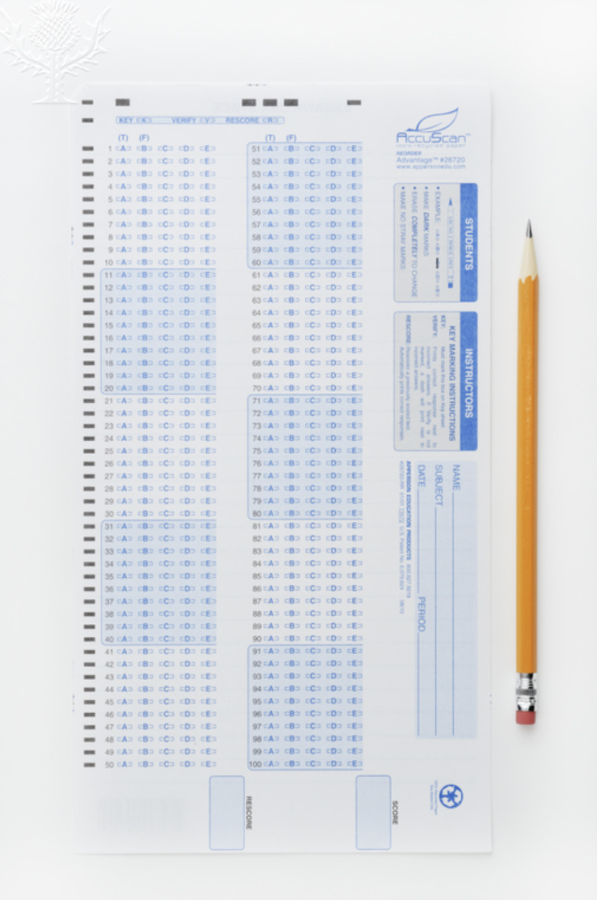Planning for an unknown future
(Courtesy of Britannica Image Quest)
A standardized testing sheet.
As early as sophomore year students have taken the ACT (American College Testing). Along with this, as early as middle school most students are encouraged to take classes to build on their future opportunities, goals, and aspirations.
Students are recipients of college advertisement emails as soon as they take a practice test during their freshman year. Teachers, administrators, and parents constantly encourage students to plan for their post-high school education or employment.
According to the Highlands 2022-23 course catalog, pathway courses such as Engineering 1 are available for students in eighth grade.
“Career pathways are systemic frameworks for addressing the needs of students & employers across the learning continuum which includes a related program of studies for each pathway,” said the HHS student handbook.
Regarding the timeframe of your pathway, the student handbook said this.
“Plans for a career pathway should be formalized by the ninth grade. Informal plans should be started in middle school.”
Students are often reluctant to enroll in these courses out of fear of being stuck in these plans.
“Pathway and college planning is very unhealthy for us to be doing. It puts even more pressure on our students by forcing them to plan for their future, and who knows, by the time they are older and have matured, they might not even want to do what they originally put down,” said Sophomore Peter Morano.
These plans, also known as “career clusters,” often include 3-5 classes, meaning they can take up elective spaces on students’ schedules throughout their high school career.
Leaving one of these courses two years in means you’ve wasted two years of an elective slot. One class in these pathways often only encompasses introductions to a few of the many skills to go into a certain career path.
While official college planning does not start until junior year, many students can feel bogged down with college-related responsibilities and requirements.
The ACT is taken in sophomore year when most students don’t always know what they’re doing, which builds on the feeling in students that they have to pick a path as soon as possible.
High school students often want to experiment with different classes, however, only having 2 elective slots and pathways becoming more and more encouraged makes them reluctant to do so.
According to the U.S. Department of Education, over 30% of college students change their major from the one they originally chose.
Most major changes come in advanced STEM (science technology engineering and math) fields. Curiously, STEM fields are some of the main courses pushed by high schools have for career pathways.
According to the National Center for Education Statistics, around 50 million students go into college with a focus on STEM, but only 37% graduate, and only 14% get STEM jobs.
If a high school’s job is truly to prepare students for college, sequestering students’ exploratory desires shouldn’t be occurring.
Students should be informed about what they want to do based on their high school experiences, not based on the one experience that they felt borderline mandated to choose when they were in eighth grade.
“All in all it’s a manipulative way to force kids into thinking they’ll need college for their future and is hurting our students mentally by putting this pressure on them,” said Morano.
Your donation will support the student journalists of Highlands High School. Your contribution will allow us to cover our annual website hosting costs.



